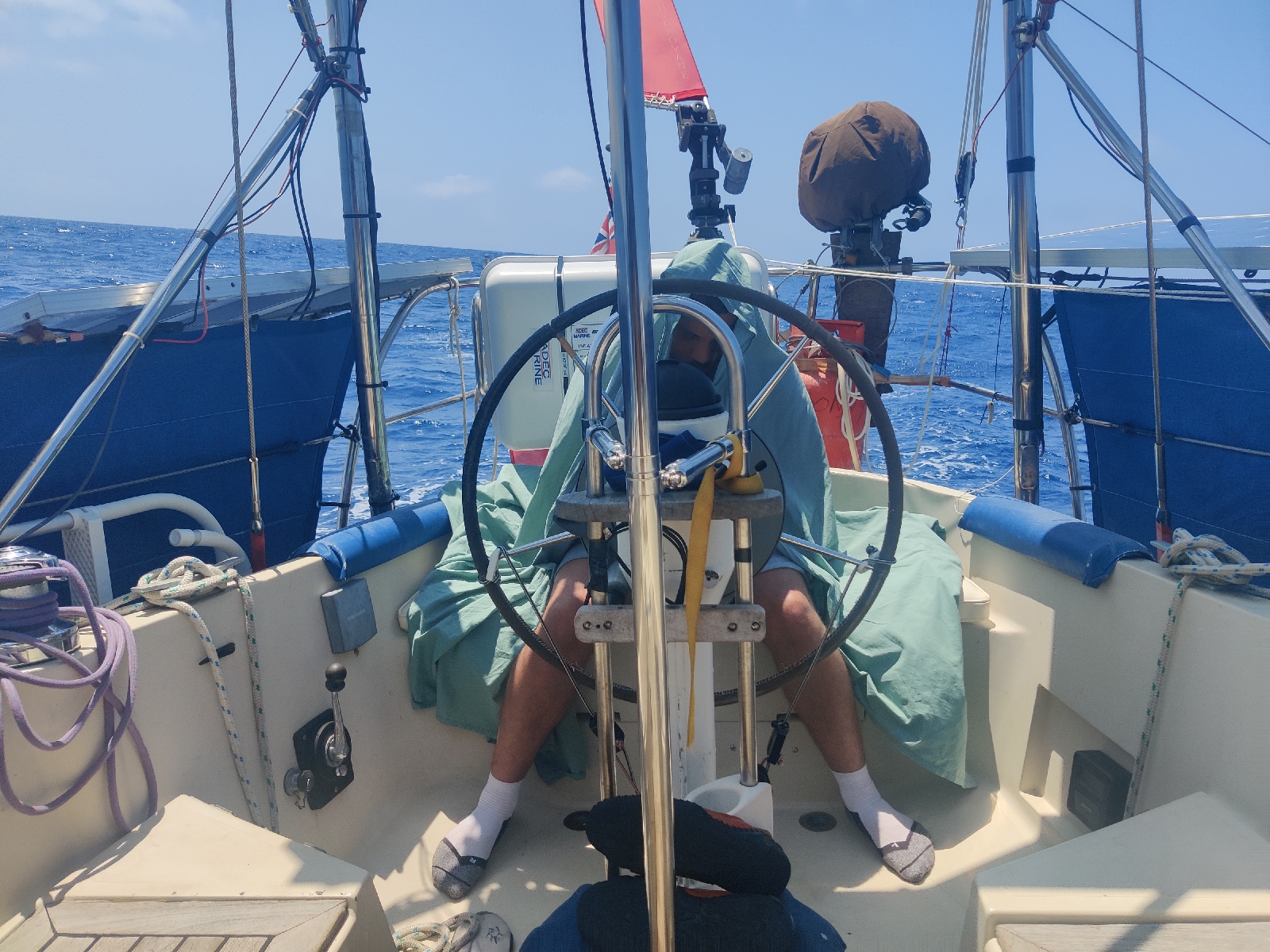We exited the Town Cut just after 1100 and headed north east to the "Mills" Easterly Cardinal buoy and then turned north for Lunnenberg, some 780 nautical miles to the north.
The wind was light from the south and so while Vince steered, I spent an hour or so setting up a pole to starboard to boom out the genoa, only to find that by the time I'd finished the wind had veered south west (as forecast) which meant that I needed a pole to port not starboard and so had to spend another hour plus setting up the other pole!
Needless to say this made me rather grumpy. However, by around 1300 we were finally rigged appropriately and making around 4 knots in the light south westerly wind.
The wind stayed reasonably constant over the following 24 hours, sometimes backing and sometimes veering, requiring the Hydrovane to be adjusted and the genoa swapped from port to starboard over the rest of the day and throughout the night.
We kept Starlink on until the solar panels couldn't keep up with the drain, which, on a cloudy afternoon, was at about 1600.
One reason was to check whether I had received a message from the Yellowbrick support team. I had discovered that the tracker was not able to receive or send messages, although it still sends position reports. It's not a major disaster given I now have Starlink, but that may prove unreliable in rough weather when the boat moves around a lot, and so I had anticipated that I would be able to communicate with Mick back at base camp via the YB to request and receive text weather reports. They have been pretty good at responding in the past and so it's rather disappointing that they haven't done so yet. Hopefully, I will get a reply later when Starlink goes on (once the batteries are fully charged).
Dinner comprised burgers, potatoes and broccoli which we managed to consume despite our bowls doing their best to slide off the table as the boat rolled from side to side. It was a bit like that famous Charlie Chaplin scene with him eating dinner on a rolling cruise liner!
Just after dusk we heard a loud bang and noticed that the preventer on the main boom was slack. I went up to the bow to investigate and found the swivel shackle attaching the block to through which the preventer line ran to the stem head, had broken apart. A good job it went then really and not at the height of a gale! It was a relatively straightforward job to replace the swivel with a standard shackle.
Given we were in a quiet part of the ocean and that I didn't expect to sleep very well on the first night I gave Vince the night off and set my alarm to 'wake' me every hour.
Rather to my surprise the AIS alarm woke me around 0100 as a tanker crossed our heading from west to east. That kept me up for a couple of hours while I made sure she would miss us. She eventually crossed our bow about a mile off which is a pretty standard 'safe distance' adopted by the more considerate of commercial vessels and so I was pretty sure she had seen us.
Then back to bed for more dozing time.
We had breakfast of muesli and fruit at around 1000 and then I dozed some more before recording our noon position which conveniently was 24 hours after taking our departure from the Mills buoy. We had covered 101 nautical miles! Perhaps this will be the first time in a long time that I follow the traditional practice of recording our noon position every day. This originated in the days when everyone navigated oceans by sextant and took a noon sight and a running fix to determine the ship's position. Local noon was chosen because that was when the sun was at its highest and so enabled a relatively easy calculation to determine one's latitude.





No comments:
Post a Comment